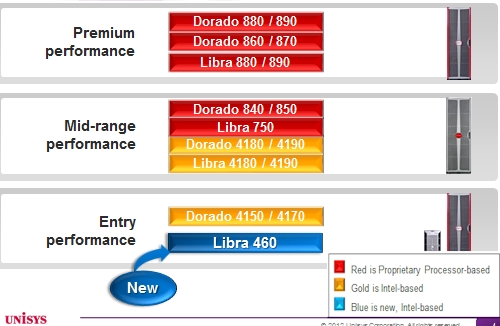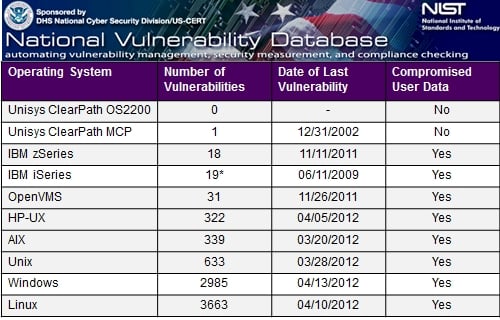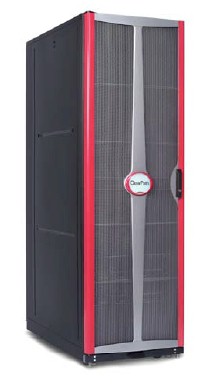Original URL: https://www.theregister.com/2012/06/19/unisys_libra_460_mainframe/
Unisys upgrades Libra mainframes with Xeon E5s
A ClearPath off of custom silicon – eventually
Posted in Systems, 19th June 2012 23:06 GMT
Intel has just upgraded its server processors with a slew of Xeon E5s this spring, and that means it is time for mainframe maker Unisys to start gussying up the Xeon-based variants in its ClearPath family.
Unisys has two different families of mainframes in the ClearPath line. From its Burroughs heritage comes the Libra family with their Master Control Program (MCP) operating system, and from the Sperry-Univac side comes the Dorado family with their OS 2200 operating system.
At the high-end and upper midrange of the Unisys product line are custom CMOS processors designed by Unisys and manufactured by IBM Microelectronics that have the high single-threaded performance on batch jobs that mainframe customers need.
In the midrange, there are smaller CMOS-based mainframes that bear the Dorado or Libra labels as well as a mix of machines that have ports of the MCP and OS 2200 operating systems and special virtualization and emulation sauce that lets CMOS binaries run atop x86 processors. The entry Libra and Dorado products are all based on Xeon machinery.
If you can't keep it all straight, here's the current lineup:

The current ClearPath mainframe lineup from Unisys
With today's announcement, Unisys is leaving alone the Dorado and Libra 4100 series, which were last updated in October 2010 with six-core Xeon X7542 processors from Intel. It's also sliding in a new Libra 460 machine at the bottom of the ClearPath lineup based on the Xeon E5-2600 family of chips for two-socket processors.
In both cases, Unisys picks the Xeons with the highest clock speed, sacrificing cores to boost batch processing power. The Libra and Dorado 4100 series are four-socket servers, with lots of cores left over to run special engines to run Java or middleware applications separately from the MCP or OS 2200 engines.
There is a geared-down Dorado 4150 that is sold as an entry machine, with a 4170 offering utility pricing. The bigger Dorado and Libra CMOS-based mainframes were upgraded in May 2011 and probably will not get a speed bump until next year, with them being on a two-year cycle, more or less.
Like other Xeon-based Libra machines, the new Libra 460 runs the MCP operating system. Unisys has chosen a two-socket server node using the E5-2653, which spins at 3.3GHz and which has four cores and 2.5MB of L3 cache per chip, as the underlying hardware platform, and given the fact that the machine has an iDRAC7 systems management controller, we all know that this is a Dell PowerEdge 12G machine.
The machine has 64GB of memory, all addressable by MCP and not even close to the physical maximum of a two-socket Xeon E5-2600 server, which tops out at 768GB using 32GB memory sticks. There are two Gigabit Ethernet ports on the system board, seven PCI-Express 3.0 peripheral slots, and either 16 or 32 2.5-inch drives can be hot-plugged into the machine. This looks like the PowerEdge R720 to me, with the high disk count R720xd for the 32 drive option.
The Libra 460 runs the native MCP 14.0 operating system as well as the virtual machine for ClearPath MCP 11.0 hosted version of MCP - also known as MCPvm - which is more than a decade old. MCPvm runs as a guest on top of a hardened Windows kernel – in this case, the 64-bit version of Microsoft's Windows Server 2008 R2 SP1 Enterprise Edition – and is often used as a development environment.

Unisys says it has the most secure OSes in the world
Unisys mainframes support hardware partitions and then have another level of abstraction and resource aggregation called a central processing module, or CPM. A CPM is not analogous to a virtual machine or software container, but more like a subsystem on an IBM mainframe or proprietary minicomputer.
The new Libra 460 machine can support up to six of these CPMs, with the smallest single CPM weighing in at a mere 40 MIPS of mainframe processing capacity. (MIPS used to mean millions of instructions per second, but on both IBM and Unisys mainframes, the term has become meaningless except as a rough gauge of relative performance.) For the maximum performance, you can set up two CPMs with an aggregate of 300 MIPS of MCP oomph, but if you want the maximum throughout on single-threaded jobs, then you set up a CPM that is rated at 225 MIPS.
Bill Maclean, vice president of ClearPath programs within the technology, consulting, and integrations solutions group at Unisys, tells El Reg that most of the mainframe shops that Unisys sells to keep their machines around for four of five years, and this one is really aimed at customers who bought Libra 300 few years back, which topped out at just under 100 MIPS of aggregate oomph.
On transaction processing workloads, the new Libra 450 has about 60 per cent more performance than the Libra 300, and it has twice as much main memory; with 19.2TB of internal disk, it now has 12.7 times the storage space as the Libra 300 it is targeted to replace. Unisys has full disk encryption, virtual tape storage, and supports the V-Max and VNX disk arrays from EMC on the Libra 460 as well.
Unisys is a little more forthcoming about its mainframe pricing than IBM is, and says that an entry configuration with that 40 MIPS and with user-based pricing for a handful of users has a five year total cost of acquisition of $31,000, including hardware and software licenses and support.
If you want all the capacity turned on and to use performance-based pricing, then the 225 MIPS box with all the bells and whistles and software will run you $3.5m. You can get a special development version of the machine at half price, and there are also disaster recovery versions for clustering that have reduced prices as well.

The ClearPath Libra 460 mainframe
If you don't use all of the Xeon cores in the Libra 460, you can dedicate some of the motors to run specialty engines. The JProcessor runs Java and PHP runtimes outside of (but tightly coupled with) the MCP environment, while the Crypto Processor does encryption and decryption for MCP workloads.
Up to two of the cores on the Libra 460 can be setup as these special processors. You can also link in the ePortal appliance, which can take COBOL screens written for MCP apps and automagically translate them to run on iOS, Android, and BlackBerry devices. These specialty engines and appliances all run on hardened Linux or Windows kernels.
Being a services company, Unisys is also happy to charge mainframe shops for appraisal and TCO assessment services so they get the most out of their iron and offer integration services to make ClearPath boxes speak to other applications and devices. Automation services to show customers how to do better systems management are on offer, as are implementation services to set up new iron and code.
Unisys is putting together a mini-TCO service with the help of Gartner to help ClearPath customers figure out how they compare to their peers in the mainframe world and across different industries in terms of getting their money's worth out of their ClearPath iron.
Eventually, says Maclean, Unisys will get to the point with both of its ClearPath families that it will no longer need homegrown CMOS mainframe engines. "Our strategy is based on moving to Intel-based platforms, from the bottom to the top," says Maclean, and this is something Unisys has said was the plan for the past several years.
For transaction processing workloads, the current midrange Libra and Dorado machines using Xeon processors can already match the high-end Libra and Dorado machines using the CMOS engines, he says, but on batch workloads, that's a different story entirely.
With Intel's clock speeds stalled at around 3GHz or so for Xeons and overclocking not really an option in the enterprise. Lab techies at Unisys have built overclocked MCP and OS 2200 mainframes based on Xeon iron, but Intel only provides a warranty for such chips for a year, which doesn't meet the four to five year lifecycle of a Unisys mainframe.
Unisys has to resort to sophisticated software tricks in its emulation layer to try to make a slower chip do batch work faster than it currently can. This involves mapping instruction lookahead and doing sophisticated pipeline management and data prefetching to parallelize batch work in the emulation firmware underneath MCP and OS 2200, so future Intel chips can deliver the batch performance Unisys mainframe shops expect.
"We're definitely moving in that direction, and more importantly, we have done enough lab work to know that we can get there," says Maclean. The full Xeon line for MCP will happen sooner, but it will take a few more years to do it for OS 2200, which has a totally different I/O structure and which has some more demanding batch workloads. ®